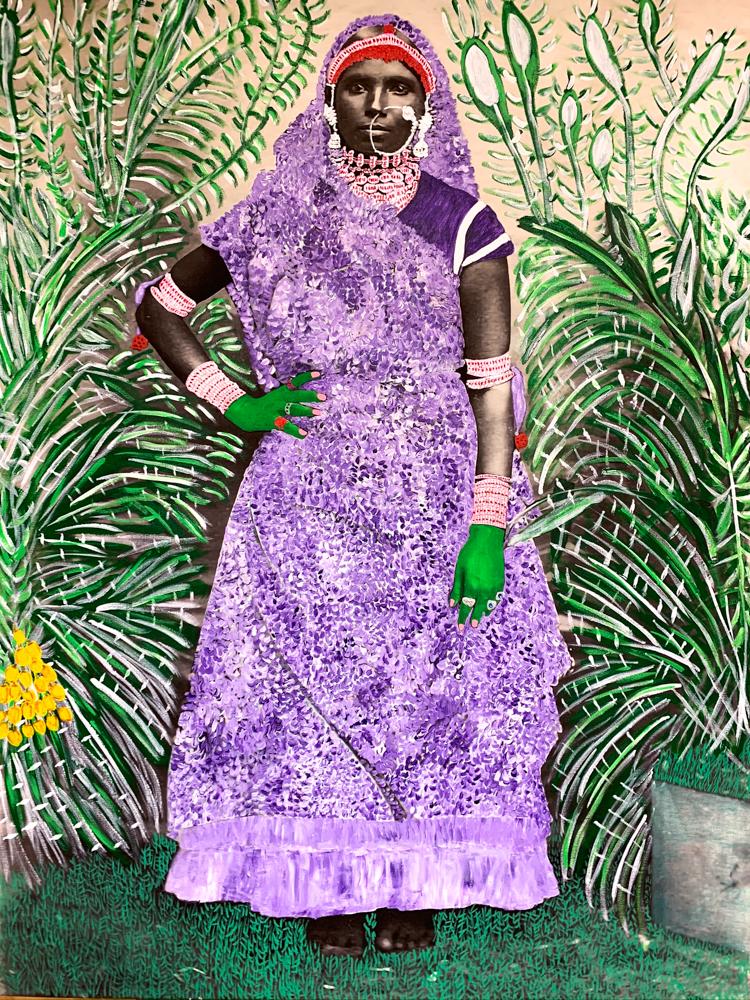Reclaiming the “Coolie Belle”: On Renluka Maharaj’s Pelting Mangoes
Stretching over the long history of indentureship, post the abolition of the trans-Atlantic slave trade, the nascent medium of studio photography became a means to document the Asian bonded labourers working in the European colonies―especially women―in a language of sartorial excess. On her discovery of French photographer Felix Morin’s portraiture work on the Indo-Caribbean “Coolie Belles”, artist Renluka Maharaj observed signs of staging that were apparent in the repeated use of clothing and jewellery across the postcards, revealing thus several asymmetries of power. With the objective of creating an Oriental vocabulary, the portraits bespoke a colonial propaganda to present an image of the “native” as civilised peoples, posing no threat to the white tourist. The women in their docile stance (and dressed in lush fabric and jewellery), particularly assured an acceptance of colonial control. Maharaj wonders about the ethical requisites of such photography: whether the women had consented to being photographed, or if they were compensated for the same―especially in light of the conjugal violence that could have potentially resulted from their participation in such public pursuits. In her attempt to ascribe a reverential tone to the subjects of the postcards, Maharaj has re-scripted their vocabulary to foreground the women’s bodies in technicolour. She is challenging the racial fetishisation of their bodies in the original images through working on the surface, thus acknowledging the multi-fold complexities that characterised their experiences in the Caribbean―specifically, her hometown of Trinidad.
Assisted in her pursuit by a professional genealogist, Maharaj traces her ancestral roots to Bihar, India. On discovering their emigration passes, she found out that her maternal grandparents had boarded a ship to reach Trinidad as indentured labourers in 1913, to work on the sugar plantations. This emphasises the idea of historical affinity, which the artist has forged with the women whose bodies she remoulded. Thus, the series, Pelting Mangoes becomes an act of reclaiming colonial archives by a descendant of the indentured. In it, bare and painted backgrounds (meant to excise the very real and precarious conditions of poverty and exploitation on the plantations) are substituted with seashells, palm fronds, cacao trees and other local motifs to visually evoke the places that the subjects inhabited. Besides being an active counter to the western stigma around garish palettes, the vibrant colours and dense textures have percolated from the iconography of Hindu deities that the artist grew up observing being worshipped at home. Mobilising a fractured history, Maharaj has named the models after her own family members, in an attempt to situate them away from the colonial gaze into novel solidarities of kinship. An exercise in representation, the series―reproduced in this companion album―rewrites the Orientalist gaze and colonial narrative encapsulating the original photographs by shifting attention away from the body and locating it on the face, which thus becomes conspicuous in its reciprocal gaze.
All images from Pelting Mangoes by Renluka Maharaj, 2020–2021. Images and captions courtesy of the artist.
Click on the image to view the album





